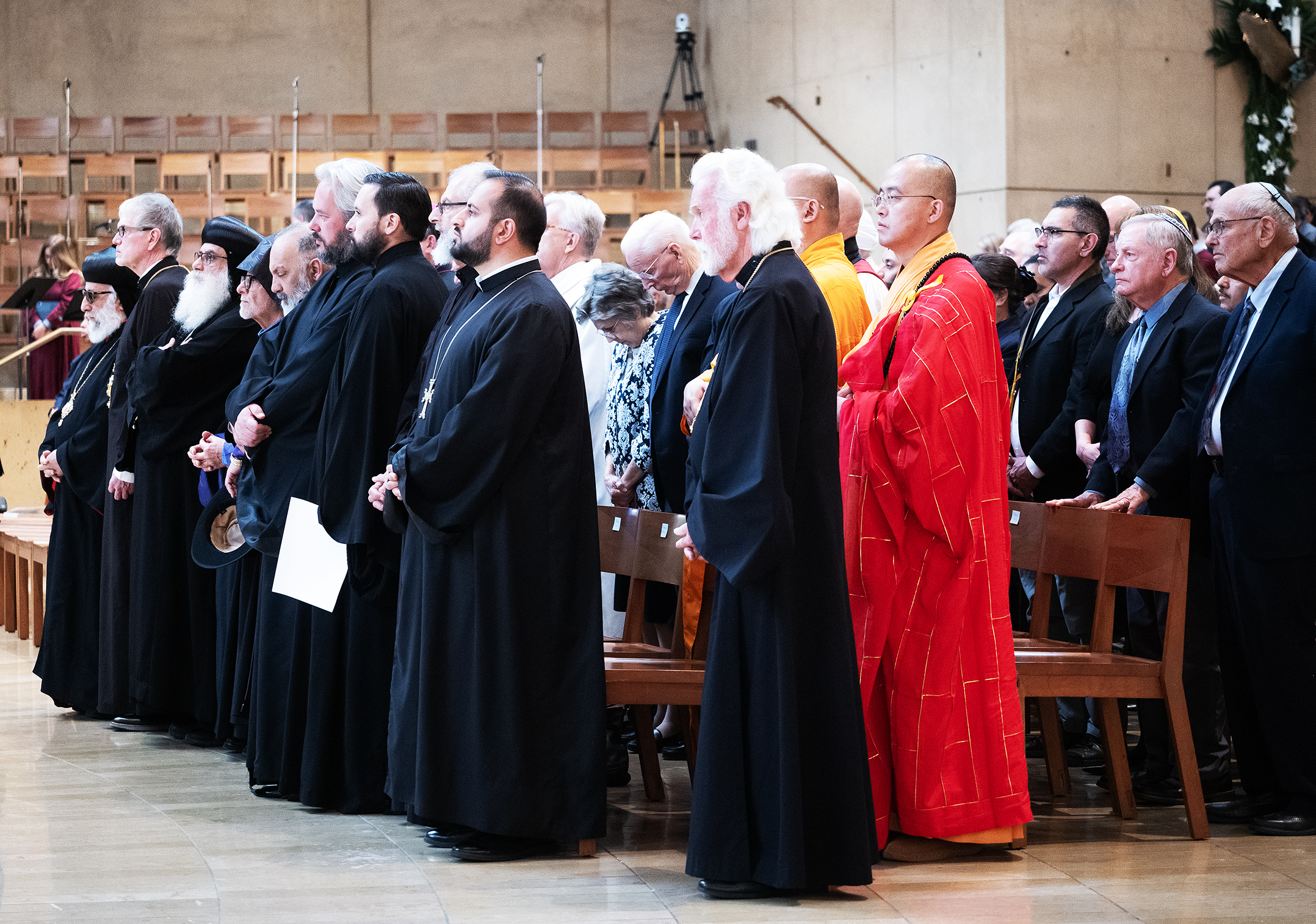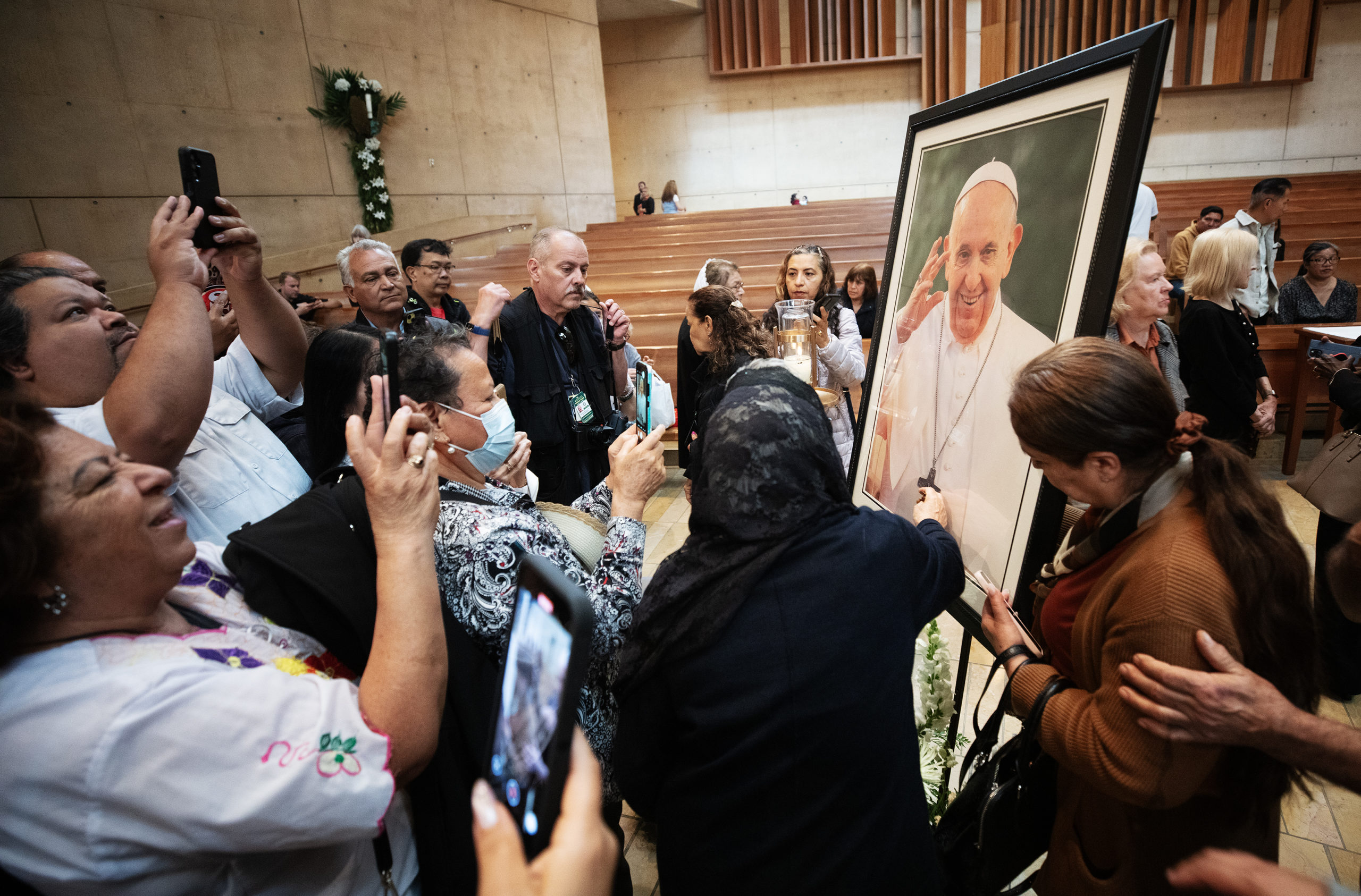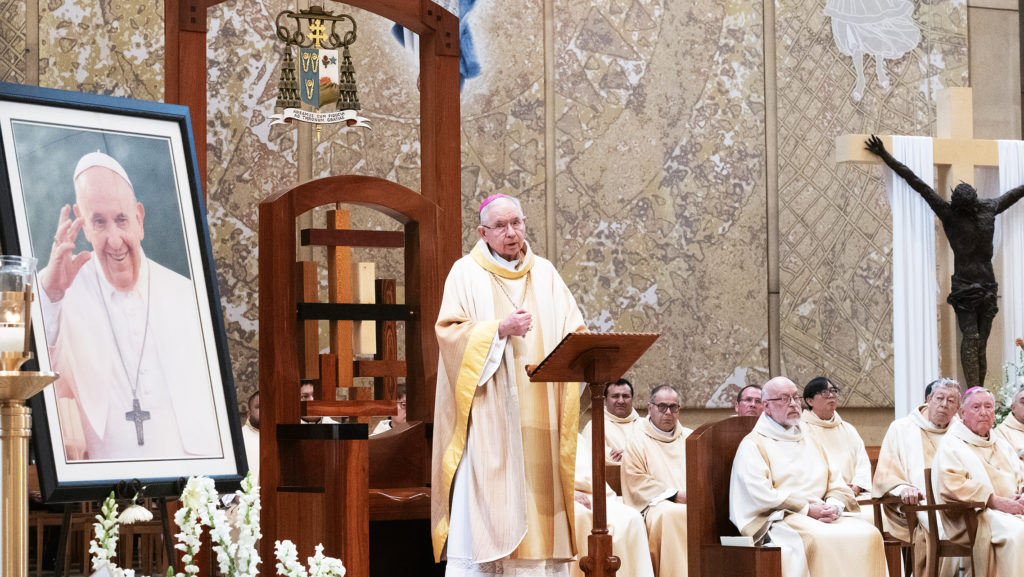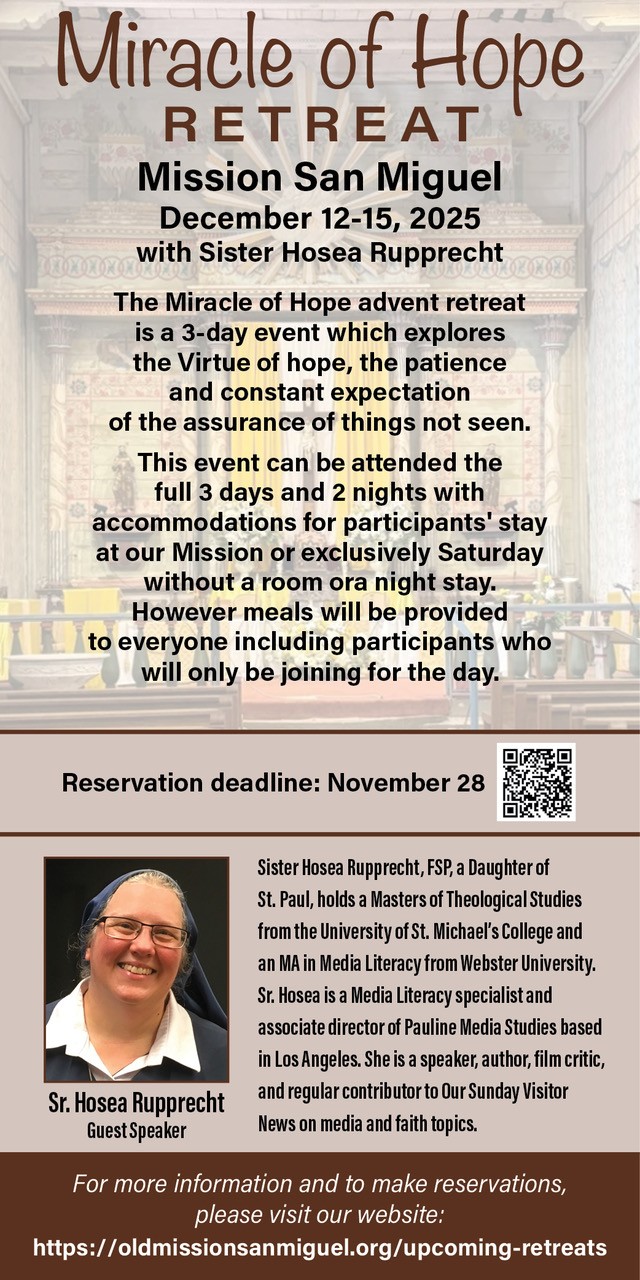At the same time that Pope Francis’ casket was being sealed in Rome to prepare for his funeral and burial, thousands of Catholics prayed for the deceased pontiff at a special April 25 requiem Mass at the Cathedral of Our Lady of the Angels.
More than 2,000 attendees — along with about 30 priests, 40 interfaith leaders, and a delegation of local and state dignitaries — turned out to honor the pope, described during the Mass as someone who was “looking out for those who are lost or in need.”
“Francis challenged our conscience, and the assumptions of our way of life,” Archbishop José H. Gomez said during his homily. “He questioned the ‘culture of comfort’ that causes us to think only of our own needs, that insulates us and makes us insensitive to the cries of the poor.
“For these past 12 years, Pope Francis has been urging us to recover our common humanity. He taught us that we are responsible for one another, that we have the duty to care for one another.”
Francis, the archbishop said, emphasized that “in loving the least among us as brothers and sisters, we find God himself.”
In interviews with Angelus, several at the cathedral Mass said they’ll remember the Argentine pope for certain things he said, like “Who am I to judge?” But most said they’ll remember Francis more for his gestures than his words: washing prisoners’ feet on Holy Thursday, shunning a bulletproof popemobile to be closer to the people, and placing women into positions of power at the Vatican.
Los Angeles City Councilwoman Monica Rodriguez attended the liturgy as a dignitary, one of several civic officials invited. But after having met Francis twice during visits to Rome, the Mass was also personal. On Friday, she sat in the front row with her 95-year-old grandmother, the woman who helped raise Rodriguez in the faith. Years later, Rodriguez gifted her a rosary the pope had given her.
“As a Catholic and someone who always hoped to see more inclusivity for the Church … I believe he really was everything the church was, what the future should be,” said Rodriguez. “That we are accepting of all people, that we are imperfect human beings, and we are to love and forgive one another for any misgivings.”
Bridget Nunez, 16, a junior at Sacred Heart High School in Lincoln Heights, also came to the Mass with her own Francis story: She met the pope in person in May 2024, while in Rome for an educational summit for the nonprofit organization Scholas Occurrentes founded by Francis himself..
“It felt like a surreal moment,” Nunez said. “It made me feel blessed, I'm with the person closest to God.”
She’s been involved in Scholas projects involving presentations to mayors and senators, and she’s grown participation in her high school to 50 students. But as Pope Francis rests in peace, Nunez thinks back to that meeting in Rome, hoping to continue the values and ideals that he set out.
“I take that with a lot of honor,” she said. “I take that with me as I live day by day, that I got to meet the Holy Father. He will always have that place in my heart that I want to continue to fulfill his mission.”
Father Alexei Smith, ecumenical and interreligious officer for the archdiocese, said the fact that so many interfaith leaders showed up to the Mass spoke to how Pope Francis’ heart and character resonated universally.
“I remember [Pope Francis] saying it’s healthy when such diverse religions, such as Buddhism and Catholicism, can work together on social justice issues,” Smith said.

Thomas Malagon remembers when Pope Francis was elected in 2013. He was at a Protestant school, in the middle of a spiritual search that also included Judaism and Buddhism, but where he ultimately returned to the Catholic faith.
Malagon attended the Mass with his mother, Rebecca Ocon, a day before returning to Pamplona, Spain to continue his studies abroad at the University of Navarra, founded by St. Josemaría Escrivá.
Malagon was inspired by reading many of Pope Francis’ encyclicals and apostolic letters, but felt like he was at his best when standing up for what’s right.
“Seeing how he was able to see past the polemic issues and get in there, while at the same time without trying to rile people up, without trying to force people into a corner,” Malagon said. “He just knew how to be there present with people, with the most marginalized, that's for sure. He always tried to fight for peace and reconciliation.”
Father Sergio Hidalgo, associate pastor at Sacred Heart Church in Lancaster, entered the seminary in 2013, the same year Francis was elected. He credits the late pontiff with teaching him to be a better priest.
“He's very pastoral,” Hidalgo said. “It's a great example how you as a priest can be close to the people, always thinking and serving and giving yourself entirely, without reservations, without constraints. Give to the people with generosity. That's the most important thing I learned from Pope Francis, how to be a priest with the heart of Christ.”
That Friday, several parishes around the Archdiocese of LA held special Masses to pray for the pope’s eternal rest. One of them, Resurrection Church in Boyle Heights, opened its doors after hours for nighttime adoration and a rosary before livestreaming the 1 a.m. LA time broadcast of the papal funeral in its hall. Parishes in the archdiocese also planned on saying special prayers during the nine-day official mourning period following Pope Francis’ funeral.
As the Cathedral Mass came to the end, Archbishop Gomez led the crowd in a final ovation for Pope Francis, before rallying the crowd three times: “Viva Papa Francisco!”
“Viva!” the cathedral answered back.
And with that, as the applause finally wound down, one thing seemed clear: the resonance of Pope Francis’ legacy would carry on.


